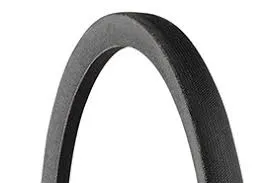- Arabic
- French
- Russian
- Spanish
- Portuguese
- Turkish
- Armenian
- English
- Albanian
- Amharic
- Azerbaijani
- Basque
- Belarusian
- Bengali
- Bosnian
- Bulgarian
- Catalan
- Cebuano
- Corsican
- Croatian
- Czech
- Danish
- Dutch
- Afrikaans
- Esperanto
- Estonian
- Finnish
- Frisian
- Galician
- Georgian
- German
- Greek
- Gujarati
- Haitian Creole
- hausa
- hawaiian
- Hebrew
- Hindi
- Miao
- Hungarian
- Icelandic
- igbo
- Indonesian
- irish
- Italian
- Japanese
- Javanese
- Kannada
- kazakh
- Khmer
- Rwandese
- Korean
- Kurdish
- Kyrgyz
- Lao
- Latin
- Latvian
- Lithuanian
- Luxembourgish
- Macedonian
- Malgashi
- Malay
- Malayalam
- Maltese
- Maori
- Marathi
- Mongolian
- Myanmar
- Nepali
- Norwegian
- Norwegian
- Occitan
- Pashto
- Persian
- Polish
- Punjabi
- Romanian
- Samoan
- Scottish Gaelic
- Serbian
- Sesotho
- Shona
- Sindhi
- Sinhala
- Slovak
- Slovenian
- Somali
- Sundanese
- Swahili
- Swedish
- Tagalog
- Tajik
- Tamil
- Tatar
- Telugu
- Thai
- Turkmen
- Ukrainian
- Urdu
- Uighur
- Uzbek
- Vietnamese
- Welsh
- Bantu
- Yiddish
- Yoruba
- Zulu
දෙසැ. . 30, 2024 10:40 Back to list
fan belt for cars
Understanding Fan Belts for Cars Importance, Function, and Maintenance
The fan belt, commonly referred to as a serpentine belt or drive belt, plays a crucial role in the operation of a vehicle's engine. While often overlooked, this component is integral to the efficient functioning of various accessories, including the alternator, power steering pump, water pump, and air conditioning compressor. Understanding the importance, functioning, and maintenance of fan belts can help car owners ensure their vehicles operate smoothly and extend their longevity.
What is a Fan Belt?
A fan belt is a rubberized belt that connects the engine to various auxiliary components. In most modern vehicles, the serpentine belt takes the place of multiple older-style V-belts, providing a single, continuous loop that can drive multiple accessories from the engine crankshaft. This design not only saves space but also reduces the complexity of the engine compartment.
Importance of the Fan Belt
The fan belt's primary purpose is to transfer power from the engine's crankshaft to the accessories. This allows the components to operate efficiently and maintain optimal performance levels. For instance, the water pump is responsible for circulating coolant throughout the engine to prevent overheating, while the alternator charges the battery and powers the electrical system. If the fan belt fails or becomes damaged, these systems can’t function properly, leading potentially to engine overheating or loss of power steering.
Moreover, a well-functioning fan belt contributes to fuel efficiency. A worn or loose belt may cause accessories to work harder than necessary, consuming more power from the engine and subsequently leading to increased fuel consumption. Therefore, maintaining the fan belt can directly impact not only the vehicle's performance but also its operating costs.
Signs of a Failing Fan Belt
fan belt for cars

Being aware of the signs of a failing fan belt can help car owners address issues before they lead to serious problems. Common indicators include
1. Squeaking or Chirping Noises If you hear a high-pitched squeal from the engine, it may indicate that the belt is worn or damaged. This noise typically occurs when the belt is slipping. 2. Cracks or Wear Visually inspecting the belt can reveal cracks, fraying, or signs of excessive wear. If the rubber appears worn, it’s time for a replacement. 3. Loss of Power Steering If the belt breaks, you may experience difficulty turning the steering wheel, which is a sign that the power steering pump is not functioning.
4. Overheating Engine If the water pump is not operating correctly due to a failing belt, the engine can overheat. This is a critical issue that requires immediate attention.
Maintenance and Replacement
Routine maintenance of the fan belt is essential for vehicle reliability. Regularly inspect the belt for signs of damage and wear, ideally every time you check the oil or conduct other routine maintenance checks. Most manufacturers recommend replacing the serpentine belt every 50,000 to 100,000 miles, but it’s always best to refer to the vehicle's service manual for specific guidelines.
When replacing a worn-out fan belt, consider opting for high-quality belts that meet or exceed OEM standards. While the upfront cost may be slightly higher, these belts often last longer and perform better than cheaper alternatives.
Conclusion
In conclusion, while the fan belt may not be the most glamorous component of a vehicle, its importance cannot be overstated. This seemingly simple belt plays a pivotal role in the overall performance and reliability of a car. Regular inspection and timely replacement are crucial in preventing failures that can lead to significant engine damage and costly repairs. By understanding the function of the fan belt and being vigilant about its maintenance, car owners can ensure smoother rides and greater peace of mind on the road. Maintaining this essential component not only prolongs the life of the vehicle but also enhances safety and performance.
-
Korean Auto Parts Timing Belt 24312-37500 For Hyundai/Kia
NewsMar.07,2025
-
7PK2300 90916-T2024 RIBBED BELT POLY V BELT PK BELT
NewsMar.07,2025
-
Chinese Auto Belt Factory 310-2M-22 For BMW/Mercedes-Benz
NewsMar.07,2025
-
Chinese Auto Belt Factory 310-2M-22 For BMW/Mercedes-Benz
NewsMar.07,2025
-
90916-02660 PK Belt 6PK1680 For Toyota
NewsMar.07,2025
-
drive belt serpentine belt
NewsMar.07,2025

